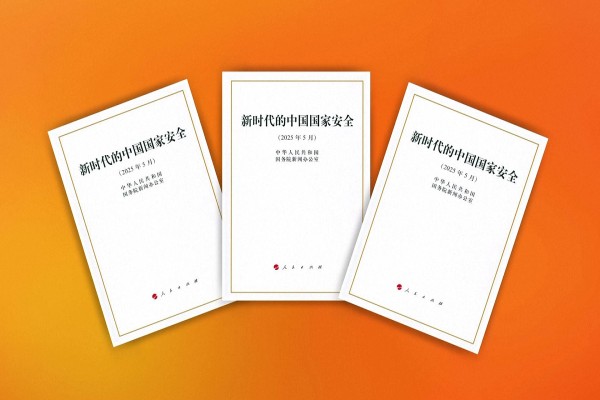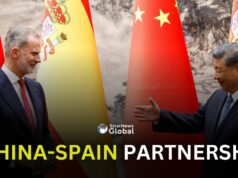
When China unveiled its latest white paper in May—titled “China’s National Security in the New Era”—it did not read like a typical policy document. It read like a manifesto. A doctrine of control, projection, and confrontation, dressed in the language of cooperation and stability.
Framed as part of President Xi Jinping’s “holistic national security” doctrine, the paper is both sweeping and sobering. It outlines 16 areas of national security, from the conventional—military, political, economic—to the unconventional: space, the deep sea, genetic data, AI, and even culture. Nothing is outside the scope of the Party’s definition of security.
And therein lies the first alarm bell. This is not about protecting China’s borders. It is about protecting the regime’s supremacy, extending the state’s reach, and rewriting the rules of global engagement in ways that challenge both international norms and regional stability.
At the centre of the white paper is the concept of “political security”—not in the democratic sense of institutional checks and balances, but in the Leninist sense of protecting one-party rule. The document makes clear that national security is inseparable from Party security. The CCP’s monopoly on power is framed as non-negotiable, and all other aspects of security—technological, social, ecological—are subservient to it.
This is not new, but it is newly explicit. In doing so, the white paper justifies an aggressive domestic agenda of censorship, surveillance, and crackdowns, as well as a hardened international posture. Criticism of China’s internal affairs is no longer viewed as inconvenient. It is now branded a direct threat to its national security.
The document also marks a shift in how China views its place in the world. No longer a rising power merely seeking respect, China is now positioning itself as a global security actor. The white paper promotes Xi’s Global Security Initiative—a set of principles that rejects “bloc politics” and “external interference,” while promoting “sovereign equality” and “win-win cooperation.” In practice, this is an alternative model of global order, one that privileges authoritarian stability over democratic openness.
The implications are significant. Under this doctrine, Chinese influence can justifiably expand across the Indo-Pacific, Africa, and even Latin America—not just through economic means like the Belt and Road Initiative, but via security partnerships, technology infrastructure, and legal tools. Cyber cooperation becomes cyber influence. Peacekeeping becomes power projection.
In regional terms, the white paper provides further clarity on China’s intent in the Indo-Pacific. It warns against “external interference in regional disputes”—an unsubtle reference to U.S. and allied presence in the South and East China Seas. It defends the right to protect overseas interests, hinting at more assertive naval activity, and expands the justification for overseas bases.
Nowhere is this more consequential than in the Taiwan Strait. While the white paper does not mention Taiwan directly, its emphasis on defending sovereignty “by all necessary means” is a coded message. It effectively pre-justifies the use of force by framing any move toward Taiwanese independence—or even foreign support for Taiwan—as a breach of China’s security.
This changes the risk calculus for the region. By framing Taiwan not just as a political issue but as a national security red line, Beijing is lowering the threshold for confrontation.
What makes China’s approach even more difficult to counter is its legal veneer. The white paper is full of terms like “rule of law,” “institutionalization,” and “order.” But these are not the rule of law as understood in liberal democracies. They are tools of lawfare—legal instruments designed to entrench Party control at home and expand influence abroad.
From its anti-espionage laws to export controls on rare earths and dual-use technologies, China is increasingly weaponising regulation. Companies operating in or with China are being forced to navigate a legal minefield, one that shifts in sync with the Party’s strategic goals.
In this context, even cooperation comes with strings. The message is clear: partner with China on its terms, or risk being locked out—economically, diplomatically, or digitally.
Paradoxically, much of this assertiveness stems from a place of insecurity. China is grappling with slowing growth, youth unemployment, demographic decline, and growing international distrust. The white paper is, in part, a defensive response—a signal that Beijing feels under siege, and is building a fortress to withstand pressure.
But it is also a signal of intent. A confident, centralised state is now building a doctrine to reshape the world around it. One that does not rely on the rules of the post-war liberal order, but actively seeks to subvert or replace them.
The international community should not mistake the white paper as mere political theatre. It is a strategic map. China is codifying a worldview in which regime preservation, global influence, and sovereign control are inseparable. And it is putting the pieces in place—military, legal, technological, and institutional—to act on that worldview.
Countries in the Indo-Pacific, from Japan to Australia to India, will need to factor this doctrine into their own security planning. So will democracies in Europe and North America. This is not a China that wants to join the global order. It is a China that wants to rewrite it.
In a career spanning three decades and counting, Ramananda (Ram to his friends) has been the foreign editor of The Telegraph, Outlook Magazine and the New Indian Express. He helped set up rediff.com’s editorial operations in San Jose and New York, helmed sify.com, and was the founder editor of India.com.
His work has featured in national and international publications like the Al Jazeera Centre for Studies, Global Times and Ashahi Shimbun. But his one constant over all these years, he says, has been the attempt to understand rising India’s place in the world.
He can rustle up a mean salad, his oil-less pepper chicken is to die for, and all it takes is some beer and rhythm and blues to rock his soul.
Talk to him about foreign and strategic affairs, media, South Asia, China, and of course India.




